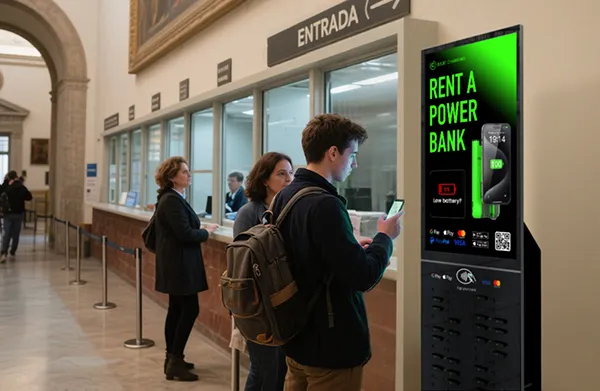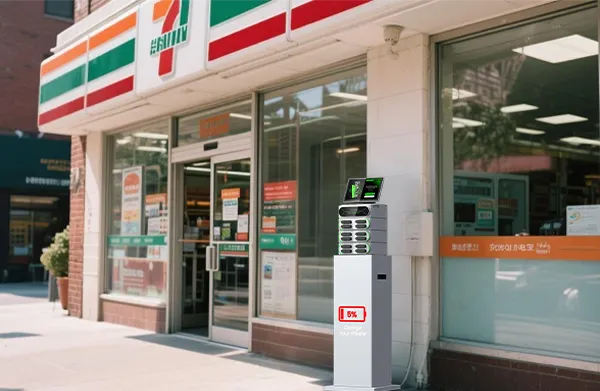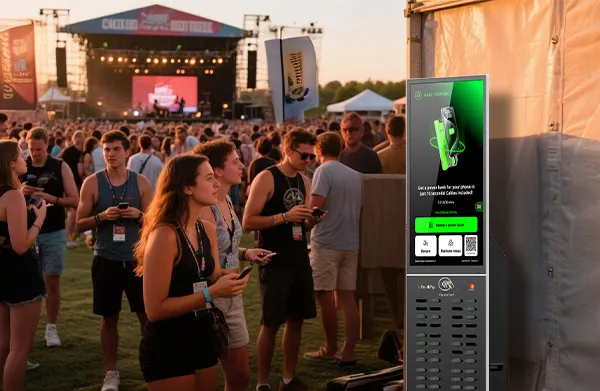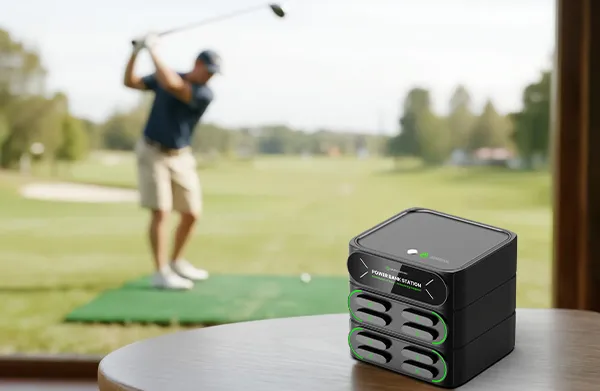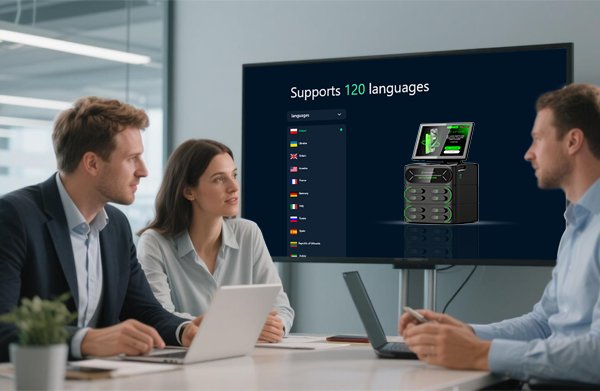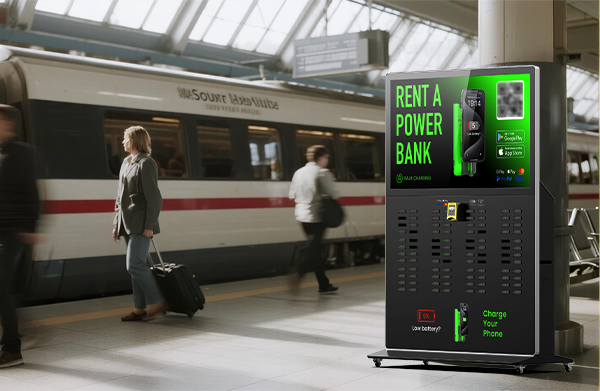When people are outdoors, in shopping malls, restaurants, or stations, and their mobile phones run out of power without a charger or power source nearby, mobile phone charging stations provide a convenient and fast emergency charging solution. Power bank sharing allows users to borrow and return anywhere within the network, covering a wide range and relieving users’ anxiety about power consumption in mobile scenarios.
With the popularity of 5G high-speed networks, the usage time of mobile phones has increased, and battery life is under greater pressure. The efficiency of conventional charging has gradually failed to meet users’ demand for fast charging. Fast-charging cell phone charging stations, using rapid charging technology, can quickly recharge mobile phones in a short time, reducing waiting time and allowing users to keep their phones powered in various scenarios, ensuring uninterrupted work and life.
1. How does fast charging technology directly improve the turnover rate of shared power banks?
- Shorten single usage time and increase service frequency
Conventional power bank rental stations usually have low charging power (5V/1A or 5V/2A), and fully charging a phone may take 2.5–3 hours. Fast-charging power bank rentals support 22.5W output power and adopt PD intelligent adaptation technology, which can charge 60% of a phone’s battery in 30 minutes. With higher charging efficiency, users no longer need to occupy the device for long periods. During shopping, waiting for transport, or dining, they can complete charging quickly and return the device promptly.
During dining, users can fully charge their phones within 1.5–2 hours using a fast-charging power bank station, while a conventional phone charging locker would take much longer. In the same period, a conventional phone charging station can serve only 3–6 users per day, while a fast-charging power bank vending machine can serve 5–10 users or more, improving the turnover rate of the equipment and enhancing the business capacity of rental power bank service outlets.
- Meet urgent charging needs and expand user coverage
Fast-charging power bank sharing is particularly valuable in transportation hubs, shopping malls, and convention centers with high mobility and large passenger flows, where users have limited time and greater demand for charging speed. In airports, for example, travelers expect to quickly top up their phones before boarding.
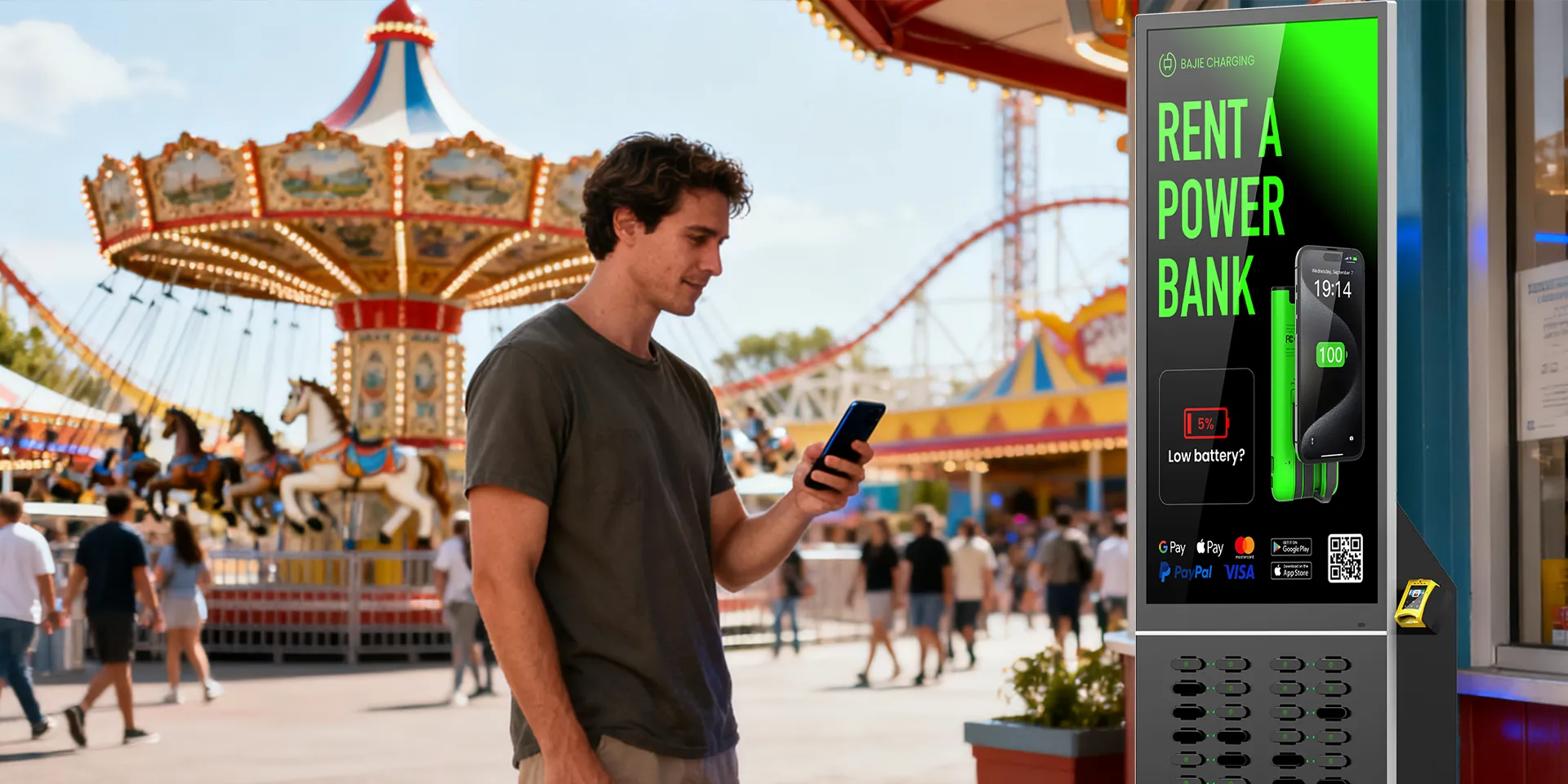
Conventional phone charging lockers are too slow, often unable to charge a phone above 60% in a short time, which may cause users to give up renting power bank sharing. Fast charging with PD 22.5W technology can charge 60% in 30 minutes, improving charging efficiency, reducing user loss due to long waiting times, and expanding the user base. This is highly suitable for travel scenarios requiring efficient charging.
- Intelligent adaptation, efficient charging, improved user frequency
Fast-charging power bank sharing stations support multiple output combinations, equipped with mainstream Type-C and Lightning interfaces, intelligently recognizing the power required by devices to improve charging efficiency. This reduces both power anxiety and time anxiety in mobile scenarios, ensuring that users’ schedules and work progress are not disrupted due to low battery. The efficient charging experience encourages more frequent use of phone charging stations, indirectly boosting turnover rates.
2. How does high turnover help shorten the investment payback period?
- Increase revenue per unit time and accelerate profitability
Power bank rental stations are usually charged by the hour or half-hour. If the rental fee is $3/hour, a conventional phone charging locker with an average of 5 rentals per day generates about $15/day. A fast-charging device with 8 rentals per day generates about $24/day. Assuming the cost of a single device is $300, a conventional phone charging station would need 20 days to pay back, while a fast-charging power bank charger would need only 12.5 days.
Fast-charging mobile charging stations, with high charging efficiency, shorten users’ charging time, increase turnover rate, and serve more users per device. This enhances the profitability of the equipment and shortens the investment return cycle.
Investors can leverage the advantages of fast-charging mobile phone charging vending stations to set more competitive pricing strategies, raising rental fees to $3.5–$4 per hour. This provides high-value services to users while accelerating cost recovery and revenue growth.
- Reduce idle time and optimize network layout
Conventional shared power banks, due to slower charging, may experience idle time during low-traffic hours, leading to underutilization. Fast-charging power bank sharing stations, by shortening single usage time, enable faster cycling of devices, serving more users within the same period.
By analyzing rental data, investors can place fast-charging power bank station rentals in train stations, popular business districts, and other high-demand scenarios to maximize utilization. A scientific optimization of network layout reduces costs from idle devices and increases overall investment efficiency.
Summary
Fast-charging power bank charging stations improve charging efficiency, enabling users to quickly recharge their phones in a short time, solving the problem of slow charging in conventional rental power bank stations. Fast charging attracts more users with urgent charging needs, expanding the potential market size.
Fast-charging power bank chargers are more suitable for deployment in airports, high-speed railway stations, and large convention centers—high-value locations with heavy traffic, strong willingness to pay, and frequent charging needs. Conventional power bank station sharing cannot meet the demand for efficient charging. By deploying fast-charging phone charging stations, investors can secure premium locations first and build strong brand barriers.
September 15, 2025



